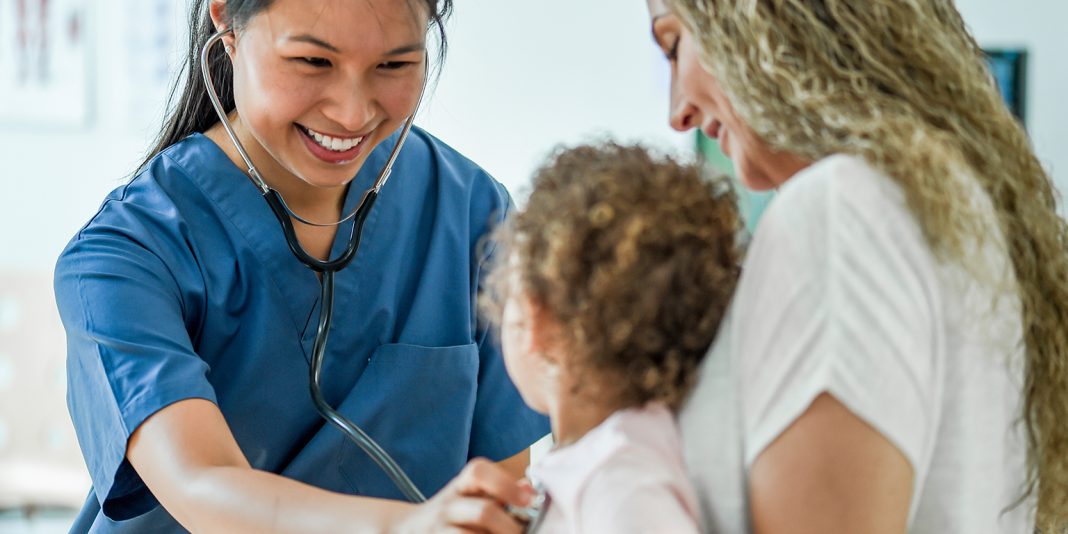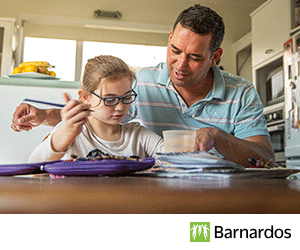It’s not often that nurses are the hot topic of parliamentary debates, but back in June, the Green Party co-leader and Health Minister tried to score political points off one another about nurses in primary schools.
Tony Ryall won the point that there were already nursing services in primary schools and Metiria Turei the point that those nurse visits are too few and far between for some high need schools (see public health nurse sidebar at the end of this article).
No one doubts that public health nurses working in the country’s schools are making a difference to the children and families they can work with. There is also little doubt that having more nurses in low decile schools could improve the health outcomes of some of the country’s most vulnerable children and families.
The Green Party policy that sparked the debate proposes one nurse per 400 primary or intermediate pupils in a low decile school.
Struggling to meet the gold standard
The Government is investing millions of extra dollars into sore throat swabbing to prevent New Zealand’s staggeringly high levels of rheumatic fever – and into nurse-delivered B4 School checks – but even in South Auckland, the extra funding is not enough to meet that proposed “gold standard” of one public health nurse per 400 pupils. That is even after focusing the Counties Manukau District Health Board public health nurse (PHN) workforce on decile 1 to 3 schools and bringing in extra primary health nurses to fill the gaps.
A ratio of one nurse per 400 pupils is Tracy McKee’s dream. McKee is an experienced public health nurse and clinical leader for the Mana Kidz project, which delivers throat-swabbing and skin infection care to 25,000 children in schools in the Counties-Manukau District Health Board area.
“One to 400 is the gold standard … that’s the number where you get to know the families and they get to trust you and come to you and you can do some really good stuff,” says McKee.
Having been the inaugural public health nurse at Wesley Primary School’s Mana Clinic in Mt Roskill – which is probably the closest to the gold standard ratio as New Zealand gets – she speaks from experience.
The Mana Kidz programme in South Auckland began with the ‘gold standard’ ratio but funding constraints quickly saw that halved, so nurses are “going 110 per cent just to keep their heads above water”, says McKee.
Even stepping up nursing services to just 50 per cent of the gold standard – about one nurse per 800 pupils – was warmly welcomed when McKee knocked on the doors of the 61 school principals involved in the project.
“I’ve felt like Santa Claus. There is great relief from these principals who say, ‘thank God, finally someone is coming in and doing something about these kids and their families’.”
With previously-stretched PHNs often only able to see the “worst of the worst” cases, when Mana Kidz teams started to visit every classroom in every low decile school, they were finding one or two children per classroom with pus-dripping sores from moderate to severe impetigo.
Dr Jill Clendon (pictured) is also a firm believer in the gold standard ratio and having nurses embedded at schools so they are part of the community. Clendon is an NZNO researcher and former public health nurse who has put theory into practice with her involvement in both Auckland’s Mana Clinic, and more recently, the school-based Victory Community Health Centre in Nelson (see models sidebar*).
Clendon says public health nurse models have been limited in what they can offer due to the gradual downward slide in numbers leading to PHNs being “spread very thinly” across schools and being quite “ring-fenced” in what contracts allow them to do.
“The capacity is just not there at the moment.”
Beyond single diseases
Clendon envisages a Green Party-type school nurse model leading to a broadening of the work that nurses can do in high-needs school communities beyond being single disease and child focused like the rheumatic fever prevention programme. She says the research literature, both her own on the public health nurse-led Mana Clinic and internationally, already shows school-based clinics work, and it was not surprising that pockets of new models of nurses in schools were already emerging to meet the need of communities where families struggle to afford doctor, nurse, and prescription fees (see models sidebar).
“The Green Party policy is just an extension of what’s already happening … I think whether you use public health nurses for it or other nurses, doesn’t really matter.”
A frustrating decade
A long-standing advocate for public health nursing and a passionate voice for improving child health in Counties Manukau District Heath Board is Lizzie Farrell (pictured).
Farrell is clinical nurse manager for the Kidz First public health nurse team at the South Auckland-based DHB and was part of the initial ground-breaking throat swabbing research project run by Professor Diana Lennon in South Auckland in the late 1990s.
She has had to wait a frustrating decade or more to see national funding found again for sore throat school clinics in her region, which has the country’s highest number of rheumatic fever sufferers. Thanks to another joint research pilot in 2011 with Lennon – the Wiri project involving a PHN-led school clinic assessing skin infections along with sore throats – Counties Manukau PHNs were keen to lead the way with a new model of school-based public health care.
When the National Hauora Coalition (NHC) won the Ministry of Health contract in 2012 to fund throat swabbing in South Auckland low decile schools, the DHB also stepped in to provide additional funding for increased nursing services to these schools, including assessing and treating skin infections.
While the funding was not enough to recreate the nurse/pupil ratio of the successful Wiri pilot, both McKee and Farrell say the new PHN/community nurse and whānau support worker teams are still making a difference.
“Every day, every classroom is screened for a self-identified sore throat or skin infection,” says Farrell.
Nurses spread thin
“Those teams on those tiny FTEs are doing amazing work out there … incredible stuff,” says McKee.
“They have treated nearly 5,500 strep throats since the end of last year – cases that you can pretty much say wouldn’t have been treated if we weren’t in those schools doing that work – and nearly 3000 treatments for skin conditions severe enough to need antibiotics.”
The nurses work under standing orders so antibiotic prescriptions can be quickly issued and work is also underway on a protocol to allow nurses to reconstitute and handover bottles of antibiotics on the spot when the occasion requires it.
Because of the scale of Mana Kidz – from term 4, there will be 61 schools and 25,000 children, as eight Papakura schools come on board – there are not enough DHB’s Kidz First PHN nurses to go around.
Multi-disciplinary approach
About 80 per cent (38 FTE) of the 52 or so full-time equivalent (FTE) nurses working on the school public health programme are public health nurses by title. The remaining nurses are practice and community nurses drawn from primary health providers working in partnership with the Coalition and Kidz First to deliver the Mana Kidz programme.
Farrell believes bringing nurses from other sectors into the public health nurses’ traditional realm – the primary school – is not a dilution of the service but an expansion.
Jenny Hugtenburg (pictured), a Wellington-based public health nurse team leader, likewise believes public health nursing should be inclusive, not exclusive, of nurses working with similar aims and philosophy.
Like many PHNs, she was a little concerned that the Green Party policy left the impression there were no nurses in primary schools, so she and a colleague met with party leader Metiria Turei to discuss the public health nurse role. They left reassured that the Greens were talking about increasing and enhancing nursing services in low decile schools and not inventing them.
Since becoming leader of a project developing a national education framework for public health nursing, Hugtenburg has become more conscious of the lack of a nationally consistent professional development model for PHNs. She leads a school health team for Wellington’s Regional Public Health, where a public health nurse is regarded as a nurse with a population health focus working in primary schools. She says the PHN’s role and tasks can vary considerably from region to region.
Secondary schools also have a range of models with community and youth health nurses joining public health nurses in delivering services to teenagers in schools and they, like the non-PHNs working in primary schools, are often taking on a similar role to PHNs.
Hugtenburg says that has been one of the interesting debates during the framework development project – the need to talk about public health nursing rather than public health nurses.
“We believe there is a wide range of nurses that do a public health nursing role as opposed to having a public health nurse title.”
National framework
That discussion influenced the title of the 40-page Public Health Nursing Education Framework discussion document, which has been out for consultation recently. “Public health nursing can be quite inclusive of your youth health specialty nurses, your practice nurse, and your outreach nurse, each with a population health focus.”
The working group is in the midst of analysing the submissions, but initial feedback is that the concept of public health nursing rather than nurses has buy-in from the sector. The project is managed by the Public Health Association, which has been funded by the Ministry of Health to coordinate public health workforce development.
Hugtenburg also believes expanding the PHN workforce in schools could make a difference to child health, as currently, services are “very tightly resourced” and concentrated on where the greatest need is – usually decile 1 and two schools.
“That’s been to the frustration of schools over the years because they see it as cutting of service. The reality is we try and do the best we can with the resources to meet where the need is.”
Farrell says health is always about juggling priorities and the new focus on the Mana Kidz schools has likewise seen Kidz First step back its nursing services to mid to high decile schools.
Hugtenburg says the nurse working at its most high need decile 1 school spends about two days a week at the school but believes there is ‘definitely’ enough work to keep her there all week.
“It would be wonderful to have a nurse there all week and for her to be the school’s nurse … but there’s certainly more opportunities to engage with families, parents, and teachers, definitely.”
Rolling with the punches
Meanwhile, the public health nurse role continues to include communicable disease control, so PHNs can find themselves pulled out of schools like during the 2009 H1N1 pandemic and to lead mass immunisation campaigns like the MeNZB campaign in 2005.
“I think we will always be an on-call workforce when there’s a similar situation again – it does make sense,” says Hugtenburg. “We have the skill set.”
Likewise, Farrell says public health nurses are always ready to “roll with the punches” and would face the dilemma of being pulled out of schools again if and when it occurs.
Counties Manukau DHB’s focus is now on the highest risk children where a PHN nurse’s time may not only prevent life-threatening rheumatic heart disease or hospitalisation with skin infections but also help ensure a child’s learning/wellbeing is not hampered by ill health; hearing, vision, and other health problems; or child abuse.
“Prisons are full of people with hearing loss – and a lot of that is avoidable,” says Farrell.
“If children can hear and they are well-clothed, warm, fed, and loved, they can learn in the classroom … if they have strong bonds to whānau and have a good sense of their identity, they will flourish.”
“That’s why I value our work in schools … I think we can promote such excellent education outcomes for children if they are well.”
As McKee says, children are one of the few groups in society that have no voice in the health system
“They’ve got no way of saying ‘I go to school hungry every day or I’ve got pus-y, oozy sores on my arms and legs that no one does anything about.’ They have no way of voicing that. Putting a nurse in the school who goes around every class looking for that stuff … where else do you have a captive audience of every child in a community? The potential is mindblowing really.”
MODELS FOR NURSES WORKING IN PRIMARY SCHOOLS
Public health nurse model
Public health nurse usually located in a central base and working across three to 12 schools. Some only work in primary and intermediate schools, others include secondary schools and pre-schools.
Mana Kidz model
Combined throat-swabbing and skin infection services being offered to 61 low decile schools and 25,000 children across South Auckland. Counties Manukau District Health Board is funding the equivalent of 0.5 nursing FTE per 400 pupils to offer the additional skin infection services on top of the Ministry of Health-funded rheumatic fever prevention programme. Is delivered largely by Kidz First public health nurses but also practice and community nurses.
Moko model
Ministry of Health funds the general practice-run MOKO project to deliver throat-swabbing clinics to 14 schools (about 2,000 children) in Kaitaia region and nurse-led skin infection services to eight of those schools. Skin and head lice treatment services to remaining schools supported by KidsCan charity (see sidebar story).
Mana clinic model
Auckland District Health Board has funded a public health nurse-led clinic based at decile 1 Wesley Primary School for more than a decade delivering nursing services to the pupils of Wesley and the neighbouring intermediate plus health advice for whānau (see sidebar story).
Victory Community Health Centre model
Community nurse based at a community health centre in the grounds of the low decile Victory School in Nelson. Works with families at the school and wider community. Funded by philanthropic grants and some PHO funding.
Aranui neighbourhood nurse model
Neighbourhood nurse working with children and whānau attending four low-decile primary schools and three early childhood centres in Aranui, Christchurch as well as wider community. Funded by Canterbury Community Trust and a variety of other contracts. (see sidebar story)
Rheumatic fever prevention programme
As at the end of June, the Ministry of Health was funding range of health providers to deliver regular throat-swabbing programmes, carried out by health workers and supported by nurses, to 211 schools covering more than 47,000 children.
Secondary schools
School-based health service. The Ministry of Health has embedded nurses (contracted by a range of health providers) in decile 1 and 2 secondary schools to provide a range of physical and mental health services and is rolling out to all decile 3 secondary schools by 2016. Other secondary schools have a range of models, including school-employed nurses or visiting public health nurse and/or youth health nurse services.
What is a public health nurse again?
By the 1920s, the Department of Health started putting public health nurses into New Zealand schools.
The modern public health nurse works in schools, homes, and community health services and their wide-ranging work can include health assessment and treatment (for example, children’s skin disease), child protection, health promotion, communicable disease control, refugee health, youth one-stop shops, B4 School checks, school-based immunisation, and advocating for families to access health and social services. They work under a population health approach that acknowledges socio-economic determinants of health. There is no national contract or formula for allocating PHNs to schools but there is an expectation that district health boards will prioritise services to low decile schools and high-needs children.
How many are there?
The Nursing Council 2011 annual practising certificate (APC) survey had 673 nurses identifying as public health nurses, 203 as school nurses, and 186 as youth nurses. (NB: nurses can identify in multiple categories). There are 2500 state schools in New Zealand.
A quick survey of the 20 district health boards in mid-2013 (prompted by a Green Party parliamentary question) found there were 280 full-time equivalent (FTE) public health nurses providing services to 680 decile 1, 2, and 3 primary and intermediate schools.
The number of schools each public health nurse works with can vary widely. For example, in Wellington, a high needs decile 1 school with 400 plus students has a public health nurse visit two days a week, Christchurch has one public health nurse for nine mostly low decile east Christchurch schools, and South Auckland’s Mana Kidz programme has to contract some non-public health nurses to meet its ratio of approximately 1 nurse per 800 children at low decile primary schools.
What is the Green Party policy?
Developing a similar school-based health service for low decile primary and intermediate schools as funded for low decile secondary schools. The party wants one nurse per typical large primary school or the equivalent of one nurse per 400 pupils.
What has NZNO proposed?
The New Zealand Nurses Organisation’s 2012 submission to the Green Paper for Vulnerable Children proposed that every New Zealand school and early childhood centre should have a full-time nurse.
NB related case studies of Nurses in Schools: the Moko Project; the Mana Clinic; and The Aranui Neighbourhood Nurse






















